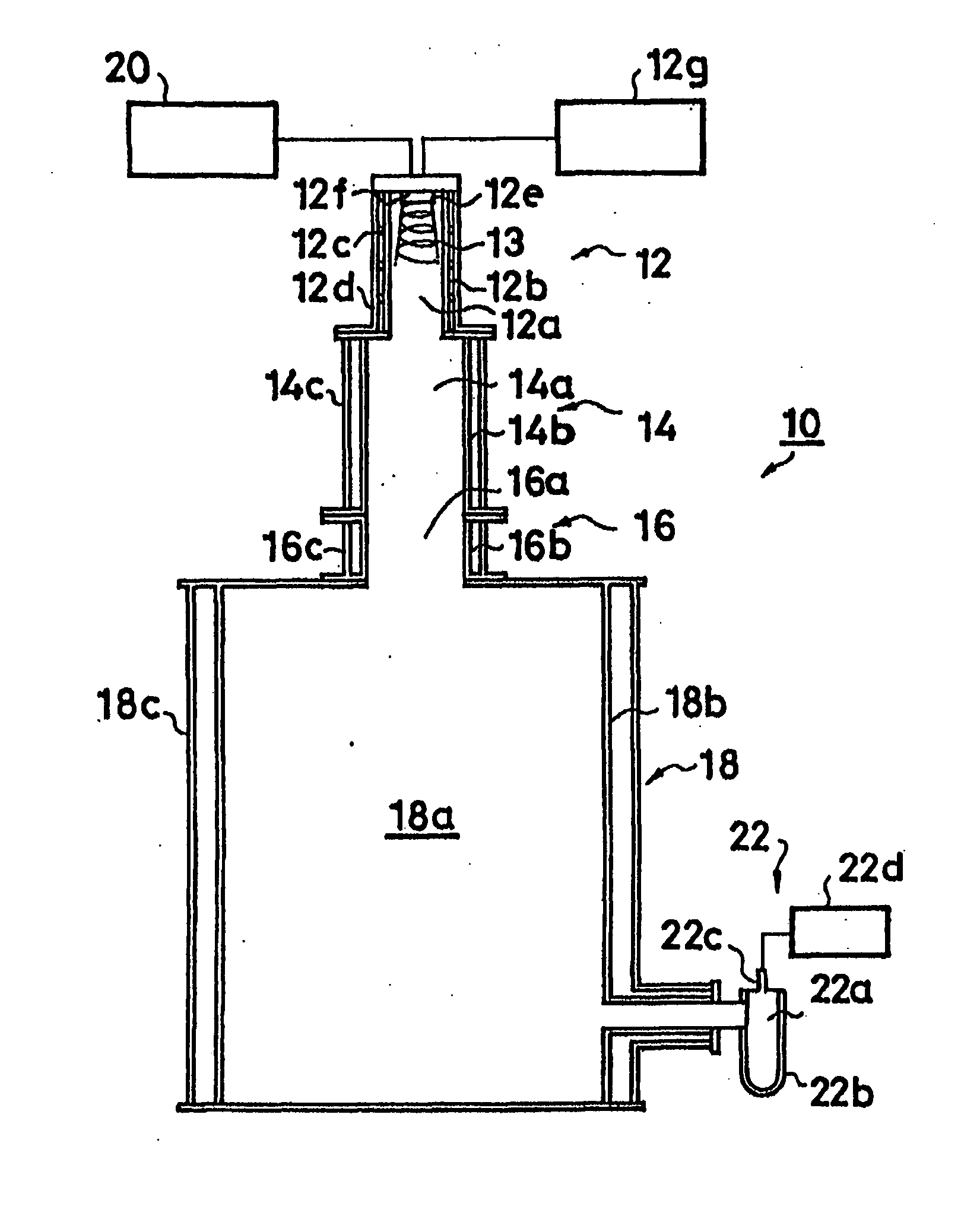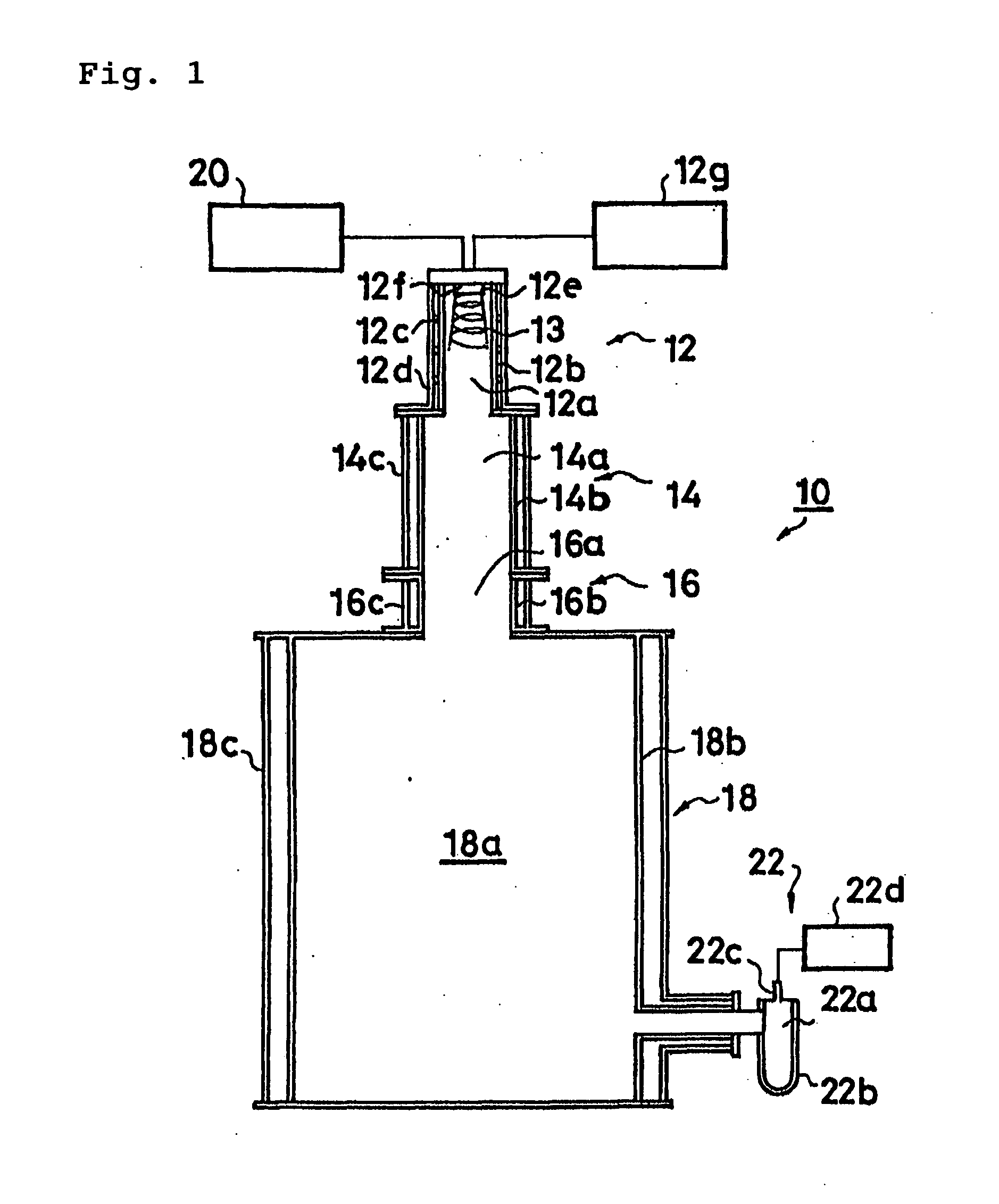Composition for forming silicon film and method for forming silicon film
a technology of silicon film and composition, which is applied in the direction of crystal growth process, polycrystalline material growth, plasma technique, etc., can solve the problems of lowering production yield, complex and expensive high frequency generator and vacuum device, and high cos
- Summary
- Abstract
- Description
- Claims
- Application Information
AI Technical Summary
Benefits of technology
Problems solved by technology
Method used
Image
Examples
synthesis example 1
[0100] The inside of a 3-liter four-neck flask equipped with a thermometer, a cooling condenser, a dropping funnel and an agitator was substituted with an argon gas. Then, 1 liter of dried tetrahydrofuran and 18.3 g of lithium metal were charged into the flask and bubbled with an argon gas.
[0101] While this suspension was being stirred at 0° C., 333 g of diphenyldichlorosilane was added through the dropping funnel. After completion of the addition, the suspension was further stirred at room temperature for 12 hours until the lithium metal disappeared completely. The reaction mixture was poured into 5 liters of ice water and precipitated. This precipitate was separated by filtration, rinsed well with water, then rinsed with cyclohexane and then vacuum-dried so as to obtain 140 g of white solid. Then, 100 g of the white solid and 1,000 ml of dried cyclohexane were charged into a 2-liter flask, 4 g of aluminum chloride was added, and the resulting mixture was bubbled with a dried hydr...
synthesis example 2
[0104] Silicon powder with an average particle diameter of 8 mm which had been obtained by dry-grinding a silicon monocrystalline ingot (resistivity: 2×103 Ωcm) was further charged into a stainless steel ball mill and dry-ground in a nitrogen atmosphere at room temperature for 8 hours so as to obtain silicon fine particles having an average particle diameter of 5 μm. The thus obtained silicon fine particles having an average particle diameter of 5 μm was rinsed with 1% hydrofluoric acid and then with ion exchanged water and then vacuum-dried at 30° C.
[0105] Then, silicon particles were produced by use of the thermal plasma treatment equipment 10 shown in FIG. 1. In the thermal plasma treatment equipment 10 of FIG. 1, the sizes of the quartz pipe 12b of the plasma torch 12, the quartz pipe 14b of the quartz double pipe 14, the inner pipe 16b of the cooling double pipe 16 and the inner pipe 18b of the quenching pipe 18 were 55 mm in internal diameter and 220 mm in length, 120 mm in i...
synthesis example 3
[0109] Silicon powder with an average particle diameter of 9 mm which had been obtained by dry-grinding polycrystalline silicon (resistivity: 3.3×103 Ωcm) was further charged into a stainless steel ball mill and dry-ground in a nitrogen atmosphere at room temperature for 8 hours so as to obtain silicon fine particles having an average particle diameter of 6 μm. The thus obtained silicon fine particles having an average particle diameter of 6 μm was rinsed with 1% hydrofluoric acid and then with ion exchanged water and then vacuum-dried at 30° C.
[0110] Then, silicon particles were produced in the same manner as in Synthesis Example 2 by use of the thermal plasma treatment equipment shown in FIG. 1.
[0111] The thus produced silicon particles had an average particle diameter of 0.1 μm.
PUM
| Property | Measurement | Unit |
|---|---|---|
| particle diameters | aaaaa | aaaaa |
| particle diameters | aaaaa | aaaaa |
| particle diameters | aaaaa | aaaaa |
Abstract
Description
Claims
Application Information
 Login to View More
Login to View More - R&D
- Intellectual Property
- Life Sciences
- Materials
- Tech Scout
- Unparalleled Data Quality
- Higher Quality Content
- 60% Fewer Hallucinations
Browse by: Latest US Patents, China's latest patents, Technical Efficacy Thesaurus, Application Domain, Technology Topic, Popular Technical Reports.
© 2025 PatSnap. All rights reserved.Legal|Privacy policy|Modern Slavery Act Transparency Statement|Sitemap|About US| Contact US: help@patsnap.com


